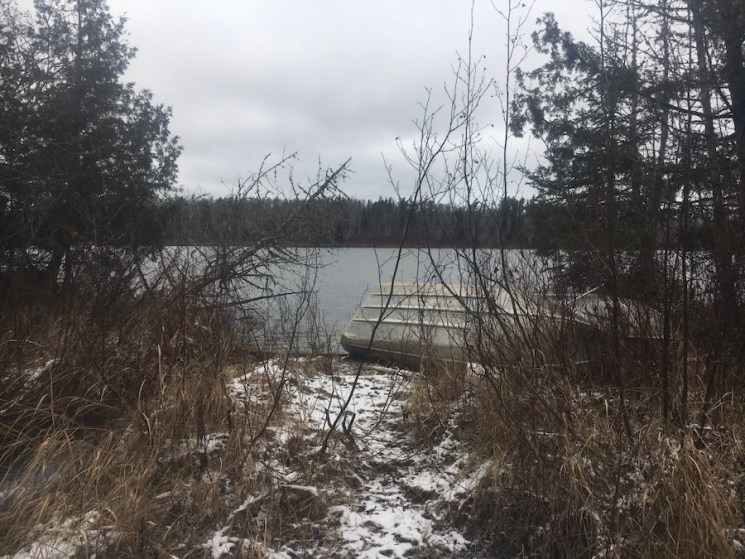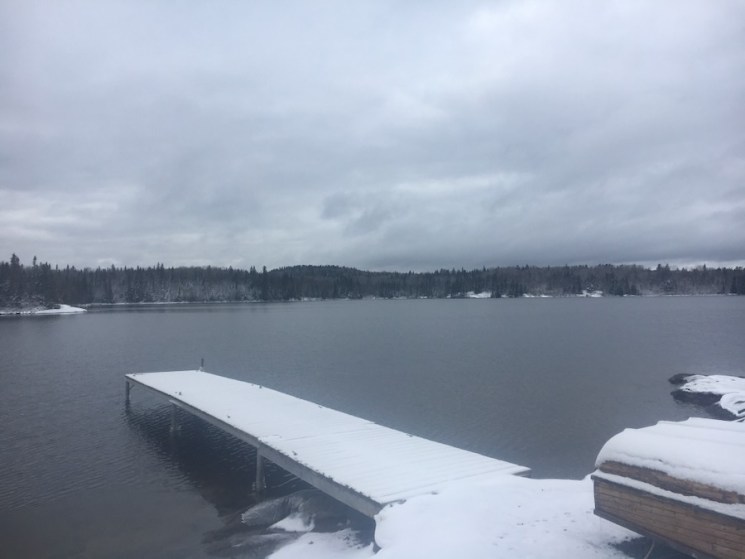On these hot summer days, we’re as far as we can be from trekking through late November snow, sleeping out in the dark woods of the Chapleau Crown Game Preserve in a rainstorm, and feeling the shocking chill of plunging through ice— but that seems to have been just another day out around the bush for prospector and Camp Lochalsh owner Dave Racicot.
We just uncovered the August 1954 issue of Outdoor Life, which includes the article “Survival” by Roy E. Howard. Read the full story on our blog and follow along with a bold prospecting adventure across Wabatongushi Lake, its smaller neighbouring lakes, and the Canadian Pacific Railway.
These page scans are best viewed on a laptop or tablet due to the smaller print! You can view or download the PDF file of the article here: article_outdoor-life_1954-08.pdf (3.8MB) and you will be able to zoom in or print it. You can also read the text from the photos below. The full issue of the magazine can be found on archive.org here.
(Blog post continues after the photos of the magazine pages)
Past and Present
Now, I (Elorah) was planning to end the post here and present the magazine article simply as the artifact and snapshot it is, but something else within me also wanted to speak of the reality captured so succinctly by this Outdoor Life author. Many readers and lodge guests will know who I am and the adventures of my time around Wabatongushi Lake (if not, please read the “Winter at Wabatongushi” blogs). Part of that story is that I am someone who has lived in Lochalsh year-round, so reading this article deeply resonated with me.
I can attest that late November is a strange but beautiful time of year out there. After discovering the Outdoor Life article, I searched through my collection of photos to reflect on my own wanderings. What was I doing in the last week of November and what did the land look like? While we do have different machinery, technology, and outdoors gear now, had much really changed in seventy years?
The climate near Lake Superior is very damp. Late in the year, fog is frequent; a certain chill hangs in the air, permeating boots and coats and settling into your lungs. The only way to make the chill disappear is to sit by the wood stove with a bowl of moose stew. While some autumns are colder than others, the weather tends to turn to rain and near-freezing temperatures in October, and snow is first seen in September to early October, but it does not stay. In early November there is often a deceptive turnaround to sunlight and pleasant warmer temperatures which allow for the final camp closing to be done–– then the ground finally begins to freeze. The land is grey and brown, with everything wilted or in hibernation aside from evergreen trees and Labrador tea plants. The sky turns grey and depthless. A sparkling blanket of snow settles over the swamps. Smaller lakes begin to freeze over.

Those who are unfamiliar with living out in the bush may be asking, why would anyone go out and do these things? We no longer have these previous generations around to hear from, but my own discovery was that over time, out around the lake, the extraordinary does become ordinary.
To some, it may be unnerving, if not completely terrifying, to traverse the land alone. There always is an aspect of caution, of not knowing what you might encounter, but trusting in your hard-earned knowledge and ever-expanding wisdom is crucial. One’s wandering both becomes routine and remains an uncertainty. The other aspect, as we also see in the article, is that the reality is that one usually is not actually alone in a territory–– and one is always dependent on others in some way despite the isolation, in fair weather or when things go wrong.


I ventured out daily to check on Camp Lochalsh, and to see lakes around the logging road network that I wouldn’t ordinarily have time to travel to during the summer season. Depending on the amount of snow, I’d take my cross-country skis or my snowshoes, or simply go on foot, and I had the luxury of either an ATV or snowmobile for further travel. I never had the courage–– or even the thought–– to attempt a solo Wabatongushi Lake canoe trip at that time of the year, though! Having been caught in snowstorms out on the lake in a cedar strip boat in late October, I can attest that it is unpleasant and unsettling–– but it’s the kind of experience you never forget.
While there have been many changes to the land and the lodges over the years, the pulse of survival and the spirit of adventure lives on in all of us.
As always, thank you for reading! I hope to find more historical tidbits to cover, aside from the more common history of gold mining (which I have plenty of technical sources on, such as government reports). I am always combing online archives for documents which continue to resurface thanks to the work of libraries, universities, and folks who are sharing their out-of-print books and magazines. I located this Outdoor Life issue the other day and immediately knew it would hook in past and present guests and residents of Lochalsh. If you have any historical documents or topic ideas related to the Wabatongushi Lake area, let us know!








Always enjoy reading your stories. Thank you.